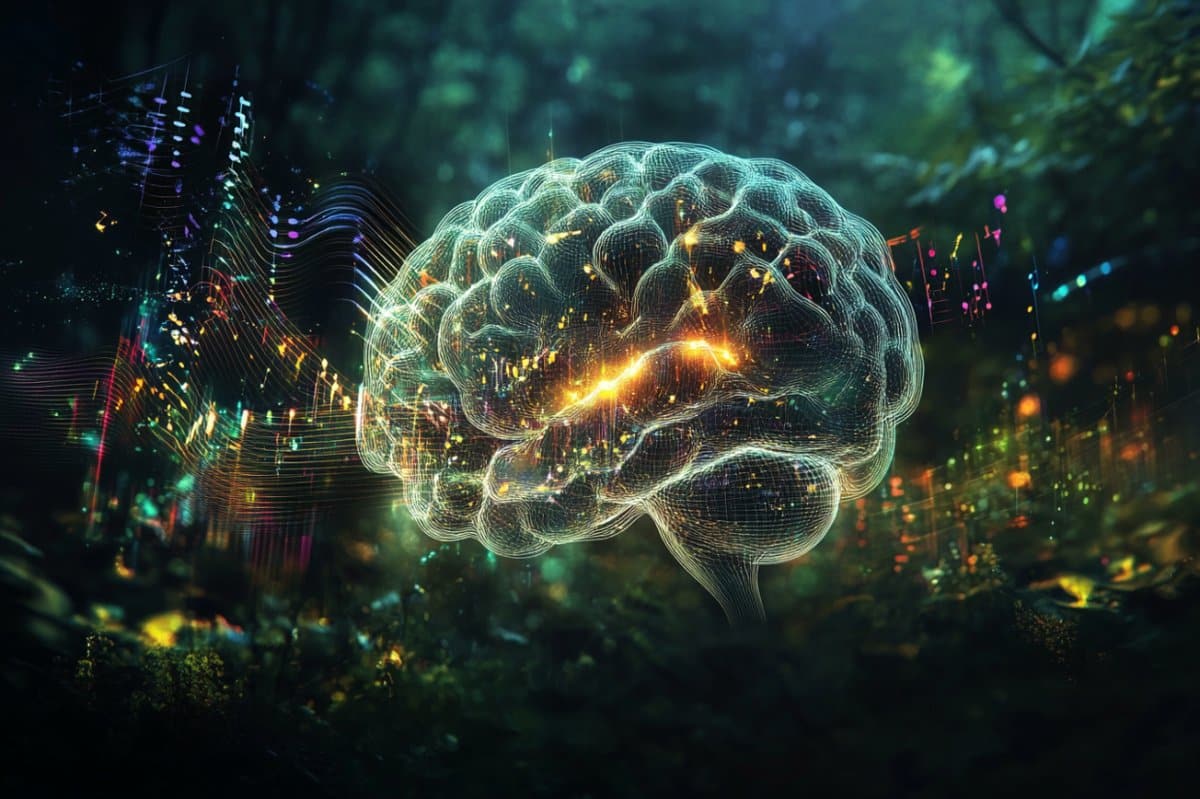Summary: Our brain doesn’t passively receive visual input—it actively orchestrates a symphony of neural oscillations to process the complex, dynamic scenes we see in everyday life. A new study reveals that features like brightness and contrast in different parts of the visual field trigger distinct oscillations across specific neural circuits.
These synchronized rhythms allow neurons to work together, encoding and assembling information into a unified percept of the visual world. This discovery deepens our understanding of how the brain processes natural vision and could inform future brain-computer interfaces or visual neuroprosthetics.
Key Facts:
- Feature-Specific Oscillations: Brightness and contrast in visual input trigger distinct neural rhythms.
- Thalamo-Cortical Coordination: Visual perception arises from synchronized activity across brain circuits.
- Future Tech Potential: Findings could help develop brain-computer interfaces or vision-restoring neuroprostheses.
Source: LMU
When we see the dynamic world in which we move, or even watch a movie in the cinema, information from each point in our eye’s field of view has different properties that our brain has to process separately, before combining these pieces of information into a coherent percept.
“Since the Nobel-Prize-winning work of Hubel and Wiesel in the 1960s we know that neurons in specific modules of the visual cortex are activated by various features in the visual stimulus when these are presented in isolation,” says LMU neurobiologist Professor Laura Busse.
“But how the brain processes a natural video stream and puts the activity of these neurons together, to eventually give rise to complex perception, is poorly understood,“ adds her colleague Professor Anton Sirota.
In the fresh issue of Neuron, a trio of LMU neuroscientists – Lukas Meyerolbersleben, PhD student at the Graduate School of Systemic Neurosciences, guided by Laura Busse and Anton Sirota from the Faculty of Biology – have put together diverse expertise in visual circuits and oscillatory activity, a type of synchronous activity that organizes populations of neurons to encode and transmit information.
“By using a large open-source dataset from the Allen Institute (USA) and a large amount of data analysis, we demonstrate that distinct image properties in local spots of the eye’s field of view, such as brightness or contrast, elicit distinct oscillations in a specific visual circuit that receives the input from those locations,” Lukas Meyerolbersleben explains.
As a result, a complex movie elicits a symphony of oscillations across frequencies, layers and locations of the thalamo-cortical circuits that “orchestrate” thousands of neurons to “play” in a coherent fashion.
Through this symphony, the brain likely both processes and puts together a coherent visual percept.
“This work is a major step forward in our understanding of natural vision,” Anton Sirota says.
“It also lays the foundation for a possible brain-computer-interface to potentially read-out the visual stream directly from the brain or develop a neuroprosthesis to restore vision,” states Laura Busse.
About this visual neuroscience research news
Author: Constanze Drewlo
Source: LMU
Contact: Constanze Drewlo – LMU
Image: The image is credited to Neuroscience News
Original Research: Open access.
“Anatomically resolved oscillatory bursts reveal dynamic motifs of thalamocortical activity during naturalistic stimulus viewing” by Laura Busse et al. Neuron
Abstract
Anatomically resolved oscillatory bursts reveal dynamic motifs of thalamocortical activity during naturalistic stimulus viewing
Natural vision requires circuit mechanisms which process complex spatiotemporal stimulus features in parallel. In the mammalian forebrain, one signature of circuit activation is fast oscillatory dynamics, reflected in the local field potential (LFP).
Using data from the Allen Neuropixels Visual Coding project, we show that local visual features in naturalistic stimuli induce in mouse primary visual cortex (V1) retinotopically specific oscillations in various frequency bands and V1 layers.
Specifically, layer 4 (L4) narrowband gamma was linked to luminance, low-gamma to optic flow, and L4/L5 epsilon oscillations to contrast.
These feature-specific oscillations were associated with distinct translaminar spike-phase coupling patterns, which were conserved across a range of stimuli containing the relevant visual features, suggesting that they might constitute feature-specific circuit motifs.
Our findings highlight visually induced fast oscillations as markers of dynamic circuit motifs, which may support differential and multiplexed coding of complex visual input and thalamocortical information propagation.





